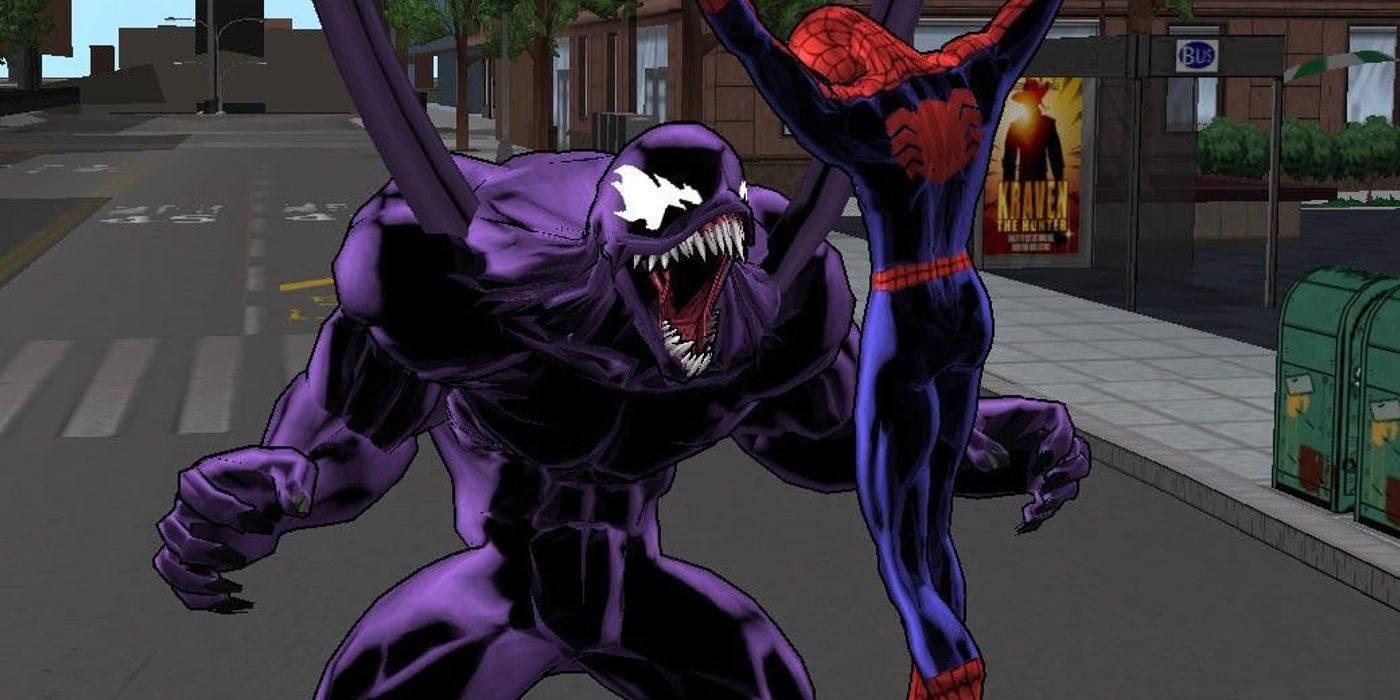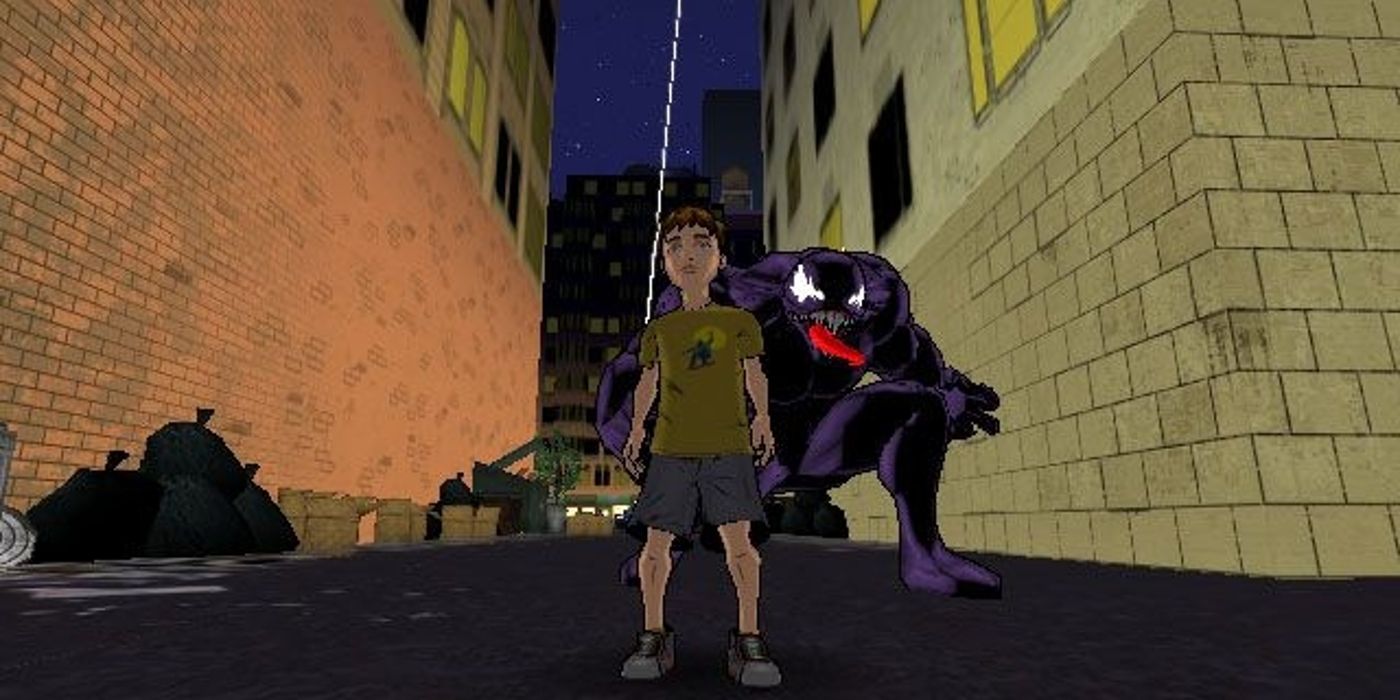Editor’s Note: A lawsuit has been filed against Activision Blizzard (the publisher of Ultimate Spider-Man) by the California Department of Fair Employment and Housing, which alleges the company has engaged in abuse, discrimination, and retaliation against its female employees. Activision Blizzard has denied the allegations. The full details of the Activision Blizzard lawsuit (content warning: rape, suicide, abuse, harassment) are being updated as new information becomes available.
Treyarch's underrated 2005 gem Ultimate Spider-Man innovated on the more iconic Spider-Man 2 movie tie-in in a number of ways, with the most significant being a playable and somewhat messed-up version of Venom. Based on seminal Ultimate Spider-Man comics by Brian Michael Bendis and Mark Bagley, Ultimate Spider-Man featured a cel-shaded version of New York and showcased the Ultimate Universe origin of Venom. Players could take control of both Peter Parker as Spider-Man and Eddie Brock's Venom, with the latter having a completely different style of gameplay. Venom's levels always lent towards mayhem and evil, but the way the character replenished his health was truly gruesome, with the game letting players chow down on New York City's civilians - including the balloon-carrying children from Spider-Man 2 - to repair the symbiote.
The third of Treyarch's Spider-Man games and the first to be inspired by the comics and not Sam Raimi's films, Ultimate Spider-Man was developed with the involvement of comic book creators Brian Bendis and Mark Bagley, with the game even emulating the latter's art-style. The Ultimate Spider-Man comic was itself developed in the early 2000s in a bid to modernize the character, and it went on to become one of the most lauded interpretations to date. Bendis, Bagley, and later artist Sara Pichelli crafted a definitive Spider-Man run, reimagining classic villains like Green Goblin and Venom while introducing new characters like Miles Morales, who succeeded Peter as Spider-Man and later joined Marvel's mainstream Earth-616 continuity. Its acclaim made it less surprising when Treyarch decided to adapt the comic into a video game in 2005, which ultimately turned out to be one of the more unique Spidey titles released.
Ultimate Spider-Man's gameplay was similar to Treyarch's Spider-Man 2, which released a year before in 2004. However, the studio expanded the open world of Manhattan to incorporate the borough of Queens, as well as introduced Venom as a playable character. This wasn't the first time Treyarch had featured a playable antagonist in one of its Spider-Man games - with 2002's Spider-Man including villain Green Goblin as an unlockable character, complete with glider - but gameplay for Venom was way more intricate. Where Spider-Man acrobatically maneuvered through the air, Venom leaped ungracefully and tore up the sidewalk, carrying all of his weight around like a smaller, goopier Hulk. Combat was also different, with players being given full command of the symbiote to tear enemies and bosses - the first of which was actually Wolverine - apart. To fit the evil theme of the character, players could also direct Venom's ire toward everyday New Yorkers, which he could eat to regain his health. While fitting, it was definitely a dark depiction, especially given there were no restrictions over who could be on the menu.
Ultimate Spider-Man Let Venom Eat Spider-Man 2's Balloon Children
Arguably the most messed-up aspect of Ultimate Spider-Man enabling its playable Venom to indulge in some trademark cannibalism was the fact that it made the balloon children of Spider-Man 2 the main course. The balloon kids of the second Raimi tie-in game are remembered mostly because of their iffy voice acting, as well as for being one of the more random crimes in progress Spider-Man could intervene in while exploring New York. Periodically while swinging across Manhattan, children would cry over the fact they'd lost their balloon, which Spidey could retrieve and bring back to them. Although it could prove irritating having to perform these tasks repeatedly - similar to the crimes Peter Parker encounters in Marvel's Spider-Man - it seems more than a bit excessive that they were offered up as snacks to Venom in Ultimate Spider-Man (who, as comics readers will know, can be satiated by chocolate as much as he can by human brains).
On the other hand, Venom being able to eat everyday citizens is on-brand. The character may be better known as an anti-hero now, thanks to a combination of recent comics and the meme-filled Tom Hardy films, but he was historically one of Spider-Man's most sinister villains. Being able to take on that role in Ultimate Spider-Man made for a refreshing - if not slightly unnerving - change of pace, and is another example of why it remains a uniquely brilliant part of the wall-crawler's gaming history.


